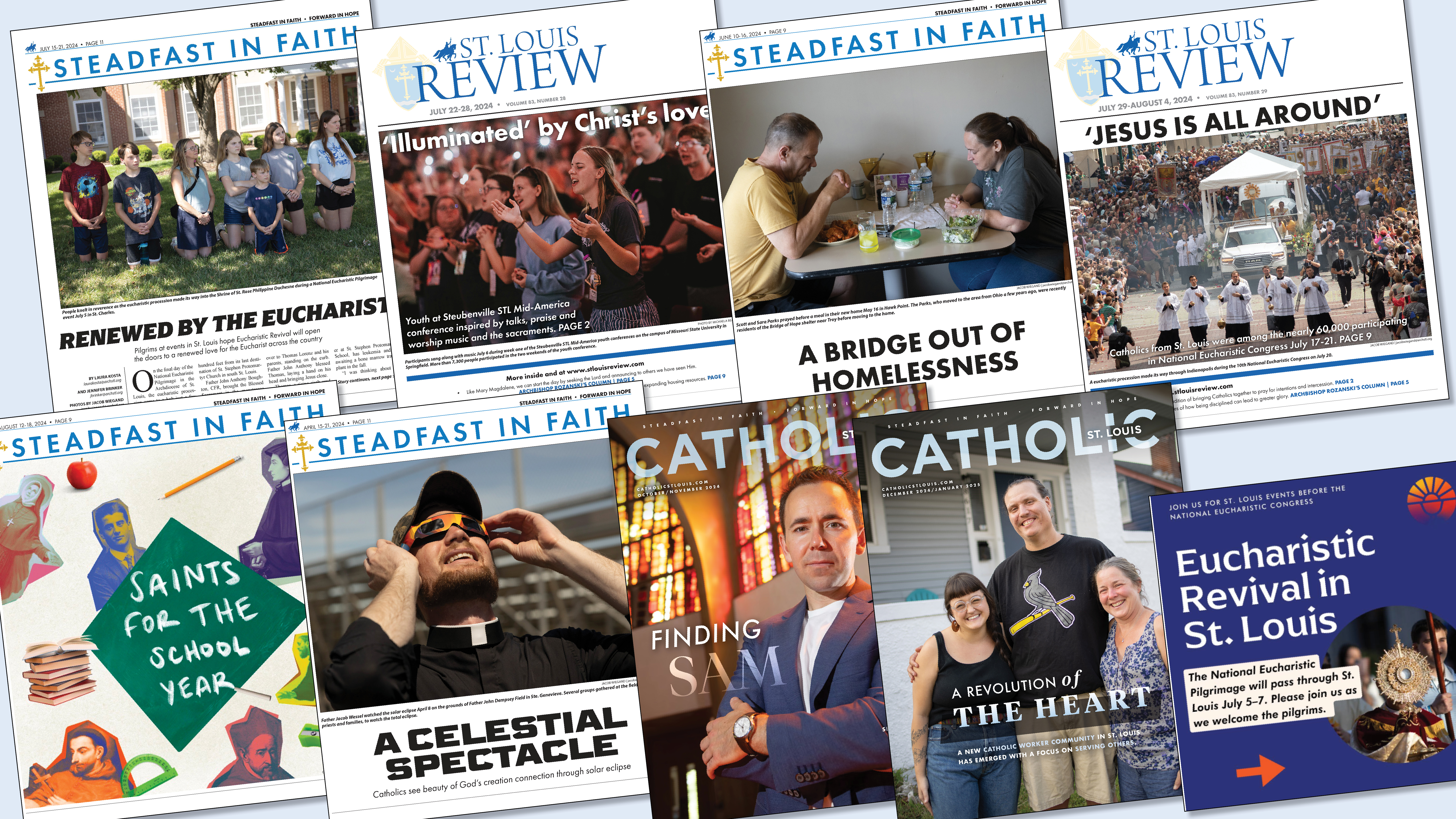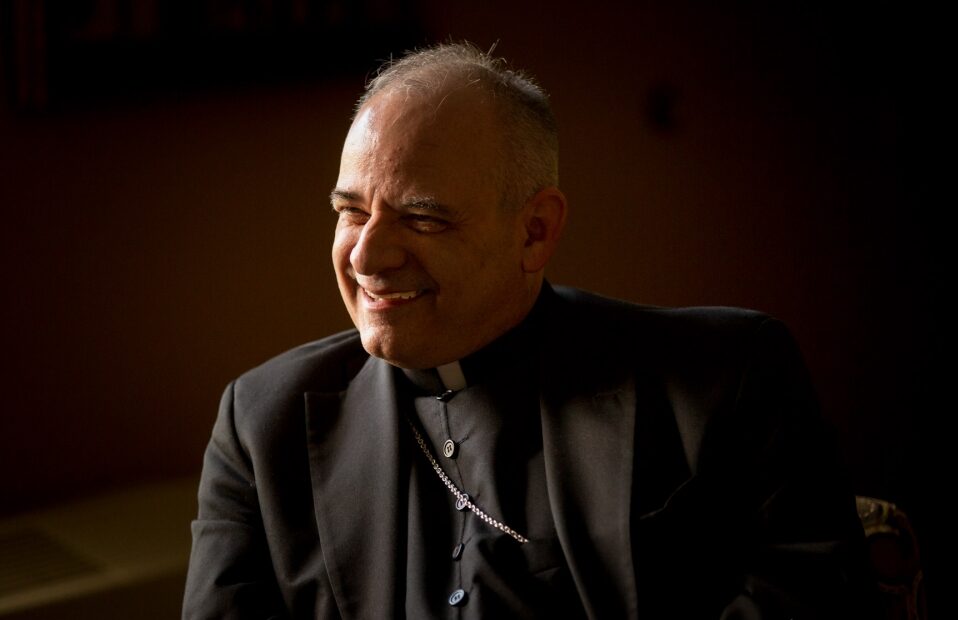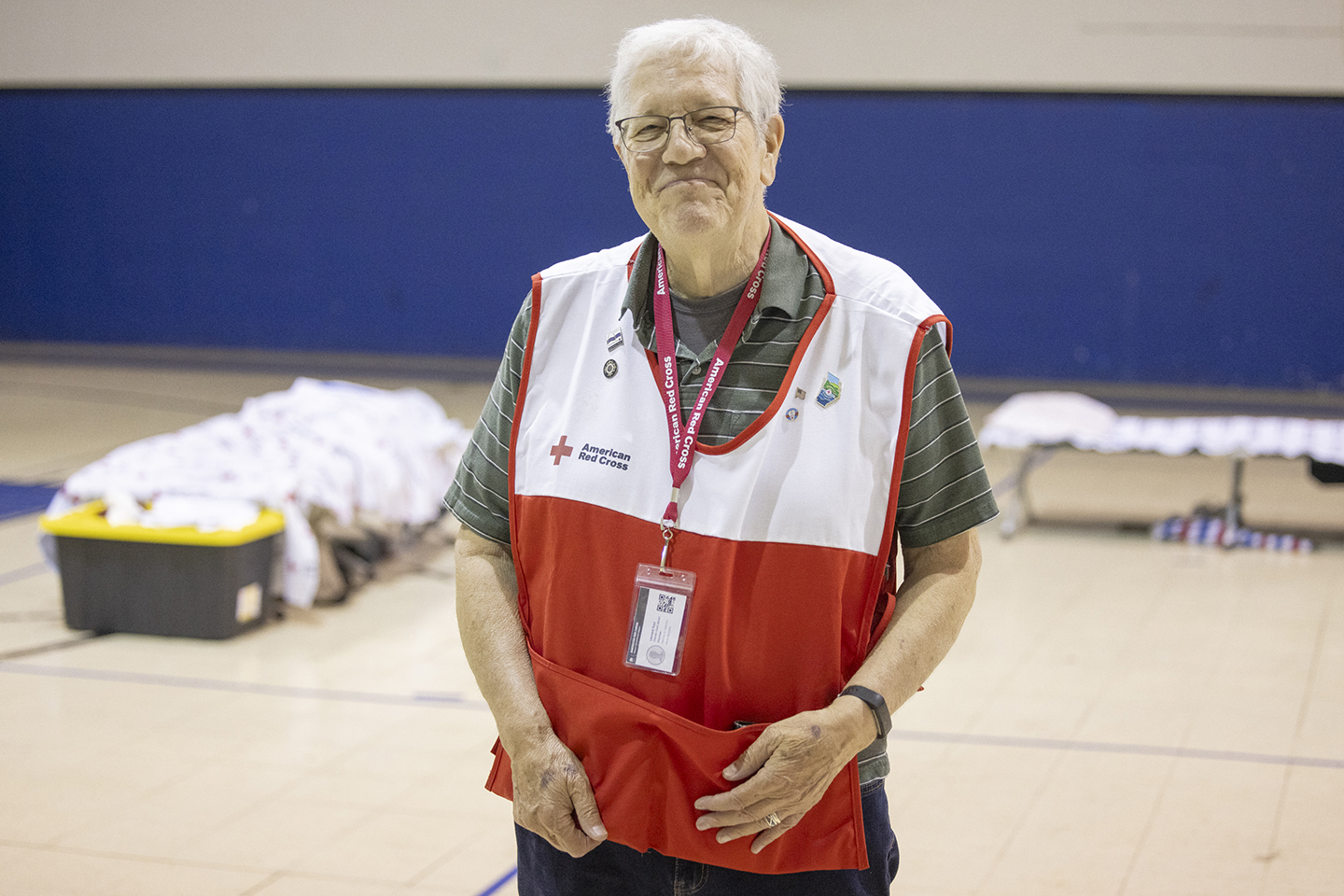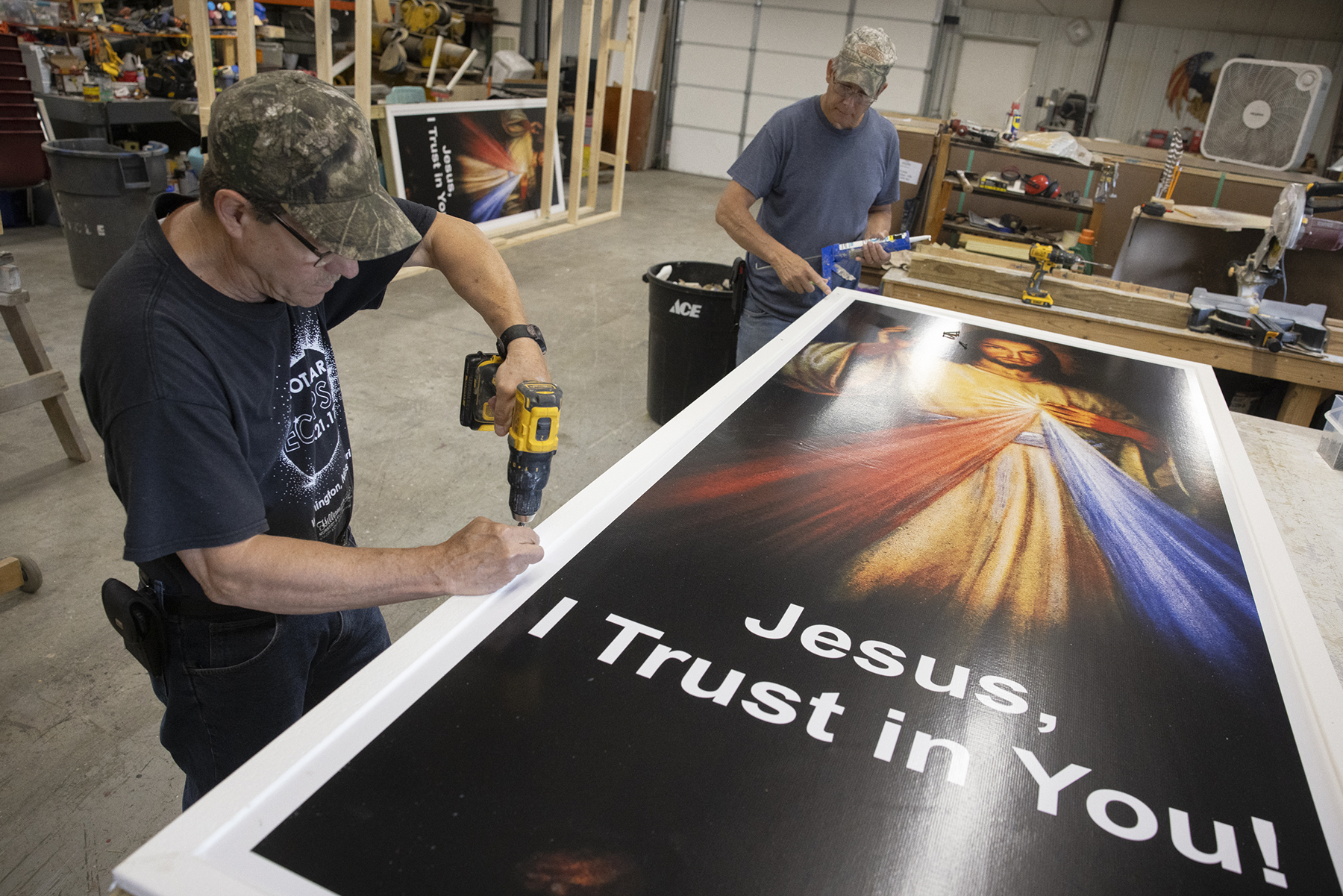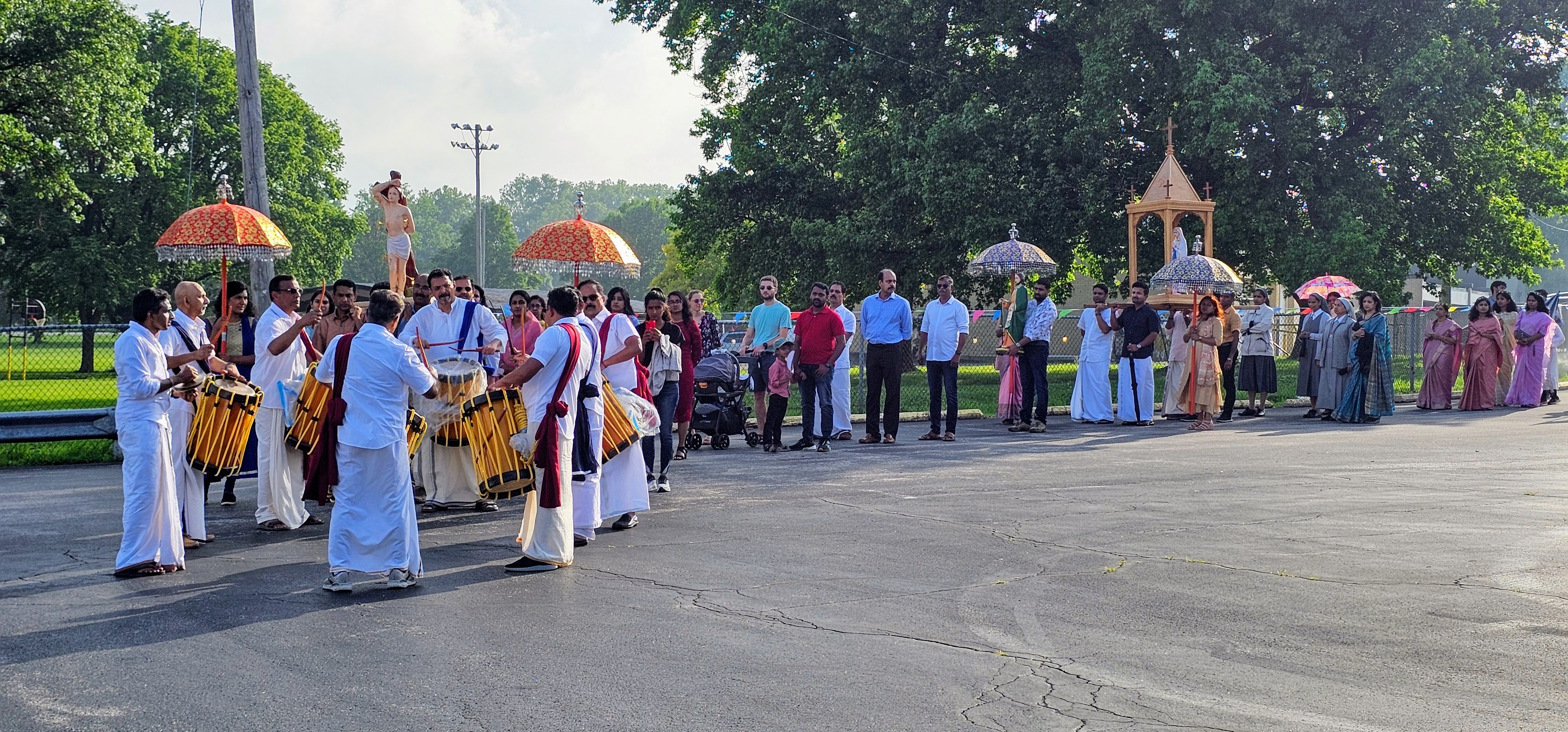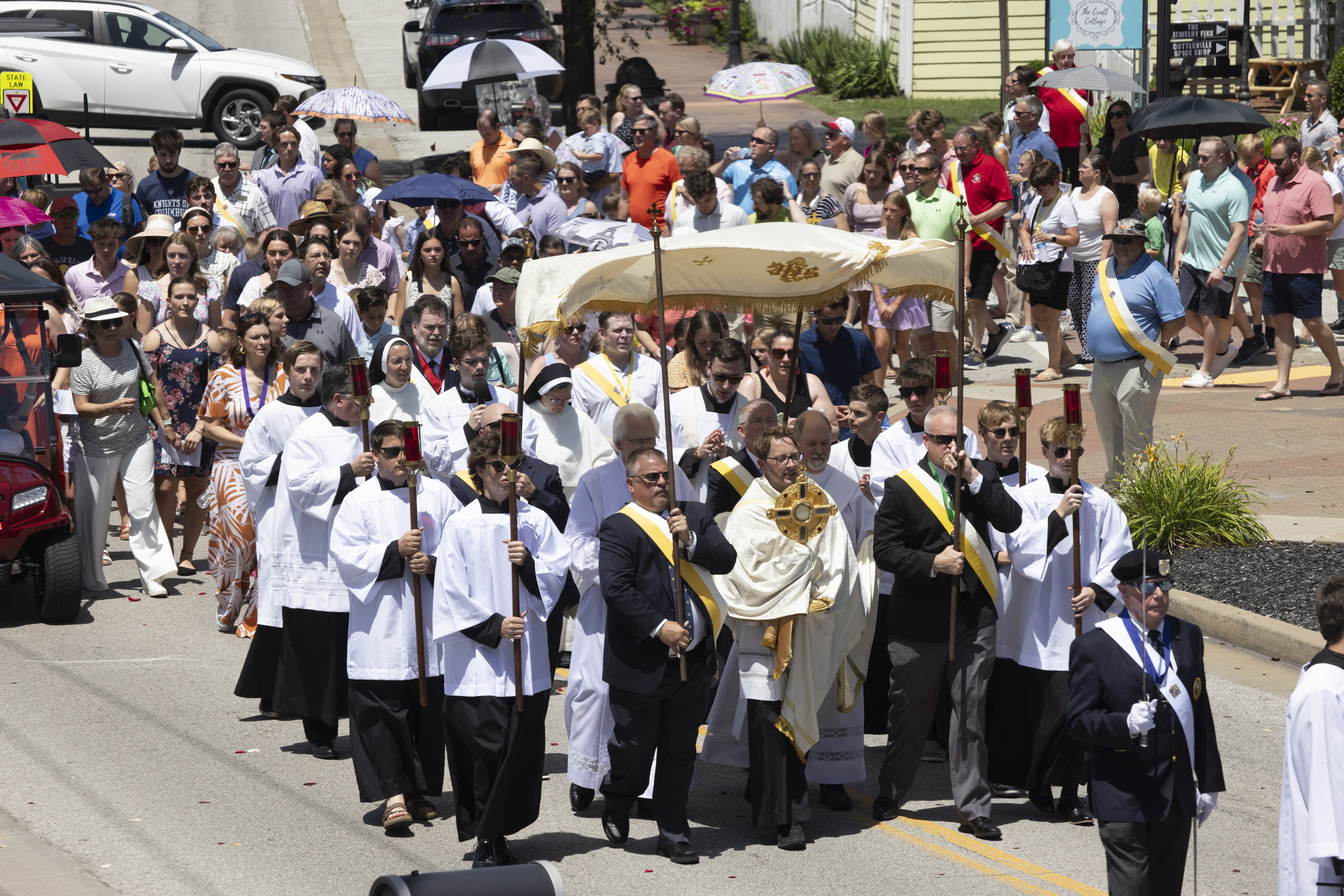Pilgrims cross Delmar Divide in act of unity
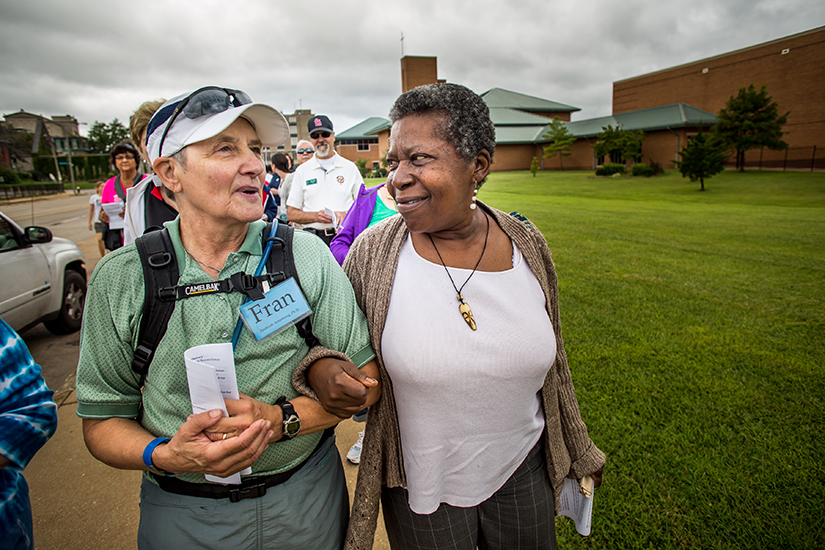
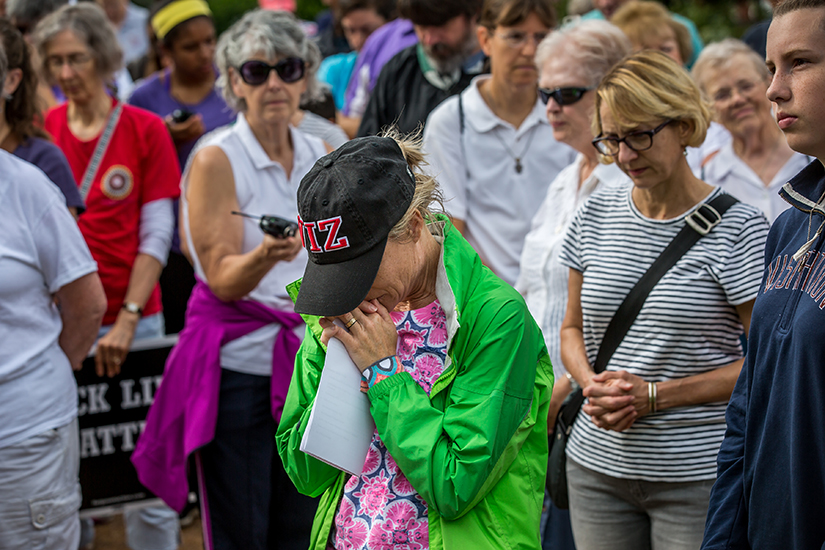
A two-mile pilgrimage drawing attention to the history and reality of racism in St. Louis brought people of various ages, races and faiths together in an act of unity.
The “Crossing the Delmar Divide” pilgrimage Sept. 10 did just that — figuratively and literally. Starting at St. Louis University’s clocktower, nearly 400 people walked through the streets of St. Louis. The pinnacle of the journey was a passage along Delmar Boulevard, a street that has become known as a visual example of the racial divide in St. Louis.
Jesuit Father Chris Collins, who led the opening remarks, called on participants to “allow God to move out of ourselves” and “to have a bigger vision and to have our hearts expanded so that we can live in love and be the people we’re created to be. It’s a beautiful moment in the life of our Church today to do something very concrete that is literally going out of ourselves, and encountering new friends in the Lord as we walk along the way.”
The pilgrimage was organized by the archdiocesan Peace and Justice Commission and the North City Deanery Interracial Relations Committee. The latter group formed in the last year and includes representatives from most of the 10 parishes in the deanery, which primarily covers north St. Louis. Pilgrims engaged in song, prayer and conversation as they made their way to the Cathedral Basilica of St. Louis, walking through the holy door designated for the Year of Mercy. A reception was held afterward at Catholic Charities of St. Louis.
The North City Deanery Interracial Relations Committee started as an outgrowth of the Sacred Conversations on Race, a series of gatherings in which participants shared their stories of race and racism, hosted by Metropolitan Congregations United in 2015.
“Folks in the North City deanery felt we didn’t want (the conversation) to stop there,” said committee member Cheryl Archibald, a pastoral associate at St. Matthew Parish in the Ville neighborhood of north St. Louis.
While more than half of the deanery’s 10 parishes are primarily African-American, several have large populations of white parishioners, including the Cathedral Basilica, St. Francis Xavier (College) Church and Our Lady of the Holy Cross. “We as a deanery need to know each other better,” Archibald said. “We know that our deanery is not predominantly African-American but is diverse.”
As an African-American, Archibald knows that relationship building must expand to other parts of the archdiocese. While there is a long history of racism in St. Louis, it still exists today, sometimes in subtle ways. She shared past experiences of visiting predominantly white parishes and getting “the stare.”
“If I go into a white parish for Mass, I’m not necessarily going to be treated well,” said Archibald. “People will stare at me and wait to see if I know the procedures, and try to figure out if I’m Catholic or not.” She shared another experience in which a
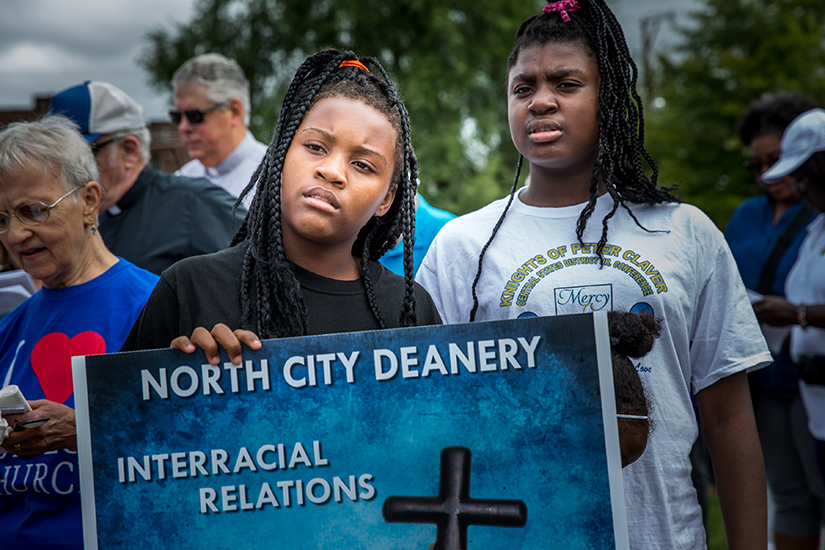
pastor turned away from her, in which she felt was an attempt to avoid shaking her hand. “Because of that I tend not to go” to those parishes, she said.
Last fall, St. Alphonsus (Rock) Church and St. Francis Xavier (College) Church, in cooperation with St. Louis University, held a eucharistic procession between the two churches along Grand Avenue. That was the inspiration for this weekend’s pilgrimage. Archibald said she hoped pilgrims who crossed over Delmar Boulevard will realize “we’re all brothers and sisters, and we’re all on this life journey together.”
Similarly, when St. Matthew, a primarily African American parish, hosted a St. Louis Mass Mob in July, it was seen as an opportunity for a diverse group of Catholics to spend time together and get to know one another, Archibald said.
“When we’re brothers and sisters together, we can solve these things and overcome our fears,” she said. “Hopefully that will alleviate some of the fears. Fear is what holds us back.”
Since becoming director of the archdiocese’s Peace and Justice Commission in 2015, Marie Kenyon has spent a lot of time visiting parishes to learn their interests and concerns. In many places, “people don’t know what to do — but they have good intentions,” she said. Providing educational opportunities in parishes has been fruitful, said Kenyon.
Examples include a presentation from Washington University professor Jason Purnell’s “For the Sake of All,” which detailed an 18-year lifespan difference in the affluent 63105 zip code of Clayton vs. the 63106 zip code in St. Louis; and Ray Boshara of the Federal Reserve Bank of St. Louis who spoke this summer on racial divide as it relates to wealth in the United States. Another parish will be hosting Norm White of St. Louis University for a talk on the “school to prison pipeline.”
While many of the talks are data driven, ultimately the common thread is addressing root issues related to race and racism, said Kenyon. “Before you can dig deep, it’s about providing education,” she said. “Everyone knows there’s a problem, but how do we solve it? But before we can go out and really talk to the community … we’ve got to look at our own house first.”
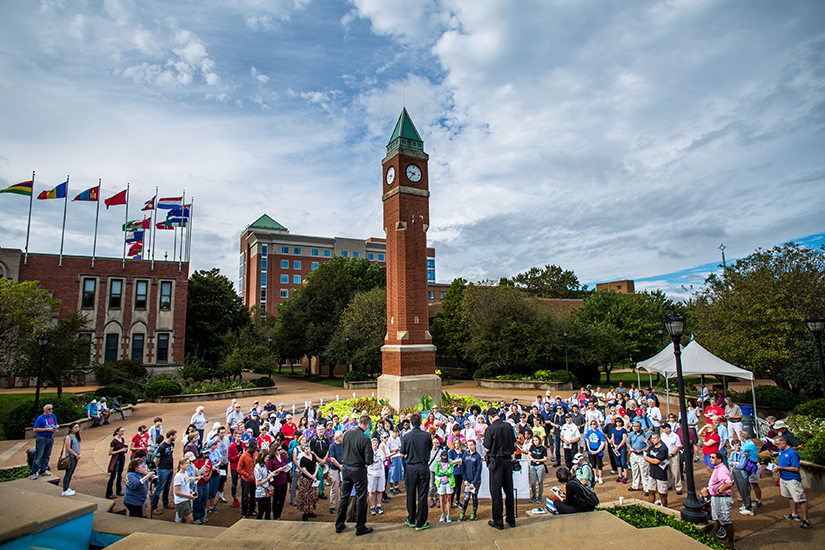
Get involved
• Social Justice For All, a group of nine parishes in West County dedicated to discussing race and social justice issues, is hosting a series of small-group discussions on healing broken race relations in St. Louis.
Jn17 is a biblically based, multi-ethnic training that guides participants to develop deep and enduring
cross-cultural relationships essential for racial reconciliation and healing. The eight-week program was developed by the St. Louis Reconciliation Network. It’s based on John 17, in which Jesus prayed
that his followers would be one, even as He and the Father are one.
Sessions will take place at Holy Infant Parish, 627 Dennison Drive in Ballwin on Sundays from 4-5:30 p.m. starting Oct. 23. To register, email info@stlrn.org. For more information, call Kathie Hanneke at (314) 704-2350. Social Justice For All also has a Facebook page.
• Holy Redeemer Parish in Webster Groves hosts a racism discussion group on the second Tuesday of the month at 7:15 p.m. at the church, 17 Joy Ave. The next meeting will take place Oct. 11. For more information, contact Carol Bahmueller at cbahmueller@gmail.com or at (314) 963-0844.
The “Crossing the Delmar Divide” pilgrimage began at St. Louis University’s clocktower in the center of the campus where people prayed before begining their walk.Photo Credits: Lisa Johnston A two-mile … Pilgrims cross Delmar Divide in act of unity
Subscribe to Read All St. Louis Review Stories
All readers receive 5 stories to read free per month. After that, readers will need to be logged in.
If you are currently receive the St. Louis Review at your home or office, please send your name and address (and subscriber id if you know it) to subscriptions@stlouisreview.com to get your login information.
If you are not currently a subscriber to the St. Louis Review, please contact subscriptions@stlouisreview.com for information on how to subscribe.


